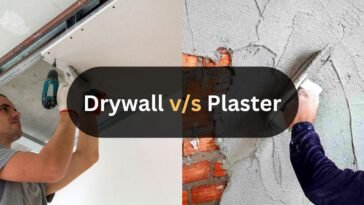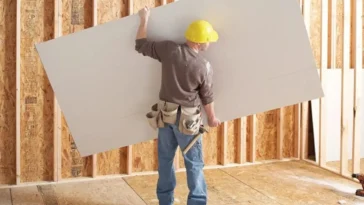When selecting a setting-type drywall compound, understanding the differences between products like Sheetrock 20 and Sheetrock 90 is crucial. Both are designed for specific applications, and choosing the right one can significantly impact the efficiency and quality of your drywall projects.
📊 Feature Comparison Table
| Feature | Sheetrock 20 | Sheetrock 90 |
|---|---|---|
| Setting Time | Approximately 20–30 minutes | Approximately 85–130 minutes |
| Working Time | Around 15 minutes | Around 60 minutes |
| Ideal Use Cases | Quick repairs, multiple coats in a day, small patches | Large-scale projects, deep fills, extended working time |
| Humidity Resistance | Excellent; unaffected by humidity | Excellent; unaffected by humidity |
| Shrinkage | Low shrinkage; suitable for heavy fills | Low shrinkage; suitable for heavy fills |
| Ease of Sanding | Sands easily to a smooth finish | Sands easily to a smooth finish |
| Application | Embedding tape, bead, trims; laminating gypsum panels to concrete surfaces | Embedding tape, bead, trims; patch and repair work |
| Weight | 11 kg | 11 kg |
| GREENGUARD Certification | Yes | Yes |
✅ Pros and ❌ Cons
Sheetrock 20

-
Pros:
-
Rapid setting time allows for multiple coats in a single day.
-
Ideal for quick repairs and small projects.
-
Excellent bond strength with low shrinkage.
-
Unaffected by humidity, ensuring consistent performance.
-
Easy to mix, apply, and sand to a smooth finish.
-
-
Cons:
-
Short working time (~15 minutes) requires quick application.
-
Not suitable for large-scale projects due to rapid setting.
-
Sheetrock 90

-
Pros:
-
Extended working time (~60 minutes) provides flexibility during application.
-
Suitable for large-scale projects and deep fills.
-
Exceptional bond strength with low shrinkage.
-
Unaffected by humidity, ensuring consistent performance.
-
Easy to mix, apply, and sand to a smooth finish.
-
-
Cons:
-
Longer setting time may delay subsequent finishing steps.
-
Not ideal for quick repairs or projects requiring rapid turnaround.
-
🏁 Conclusion & Recommendation
Both Sheetrock 20 and Sheetrock 90 are high-quality setting-type drywall compounds with specific advantages tailored to different project needs.
-
Choose Sheetrock 20 if you’re working on small projects or repairs that require a quick turnaround. Its rapid setting time allows for multiple coats in a single day, making it ideal for fast-paced jobs.
-
Choose Sheetrock 90 for larger projects that require more working time. Its extended setting time provides flexibility during application, making it suitable for deep fills and extensive drywall installations.
Recommendation: For professionals and DIYers, it’s beneficial to have both Sheetrock 20 and Sheetrock 90 on hand. Use Sheetrock 20 for quick fixes and areas that need to be completed rapidly, and Sheetrock 90 for larger sections where more working time is advantageous.




 No products in the cart.
No products in the cart.